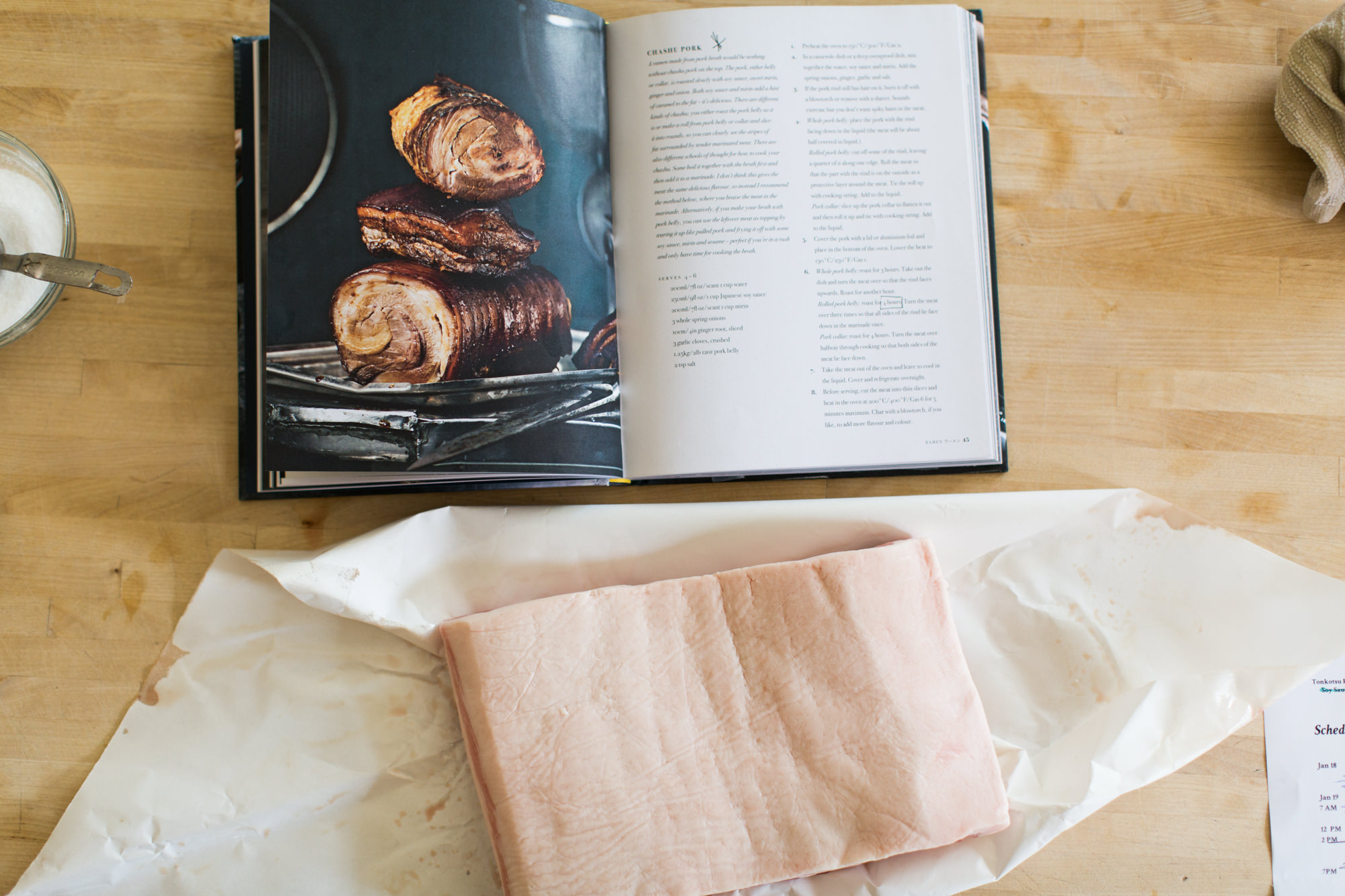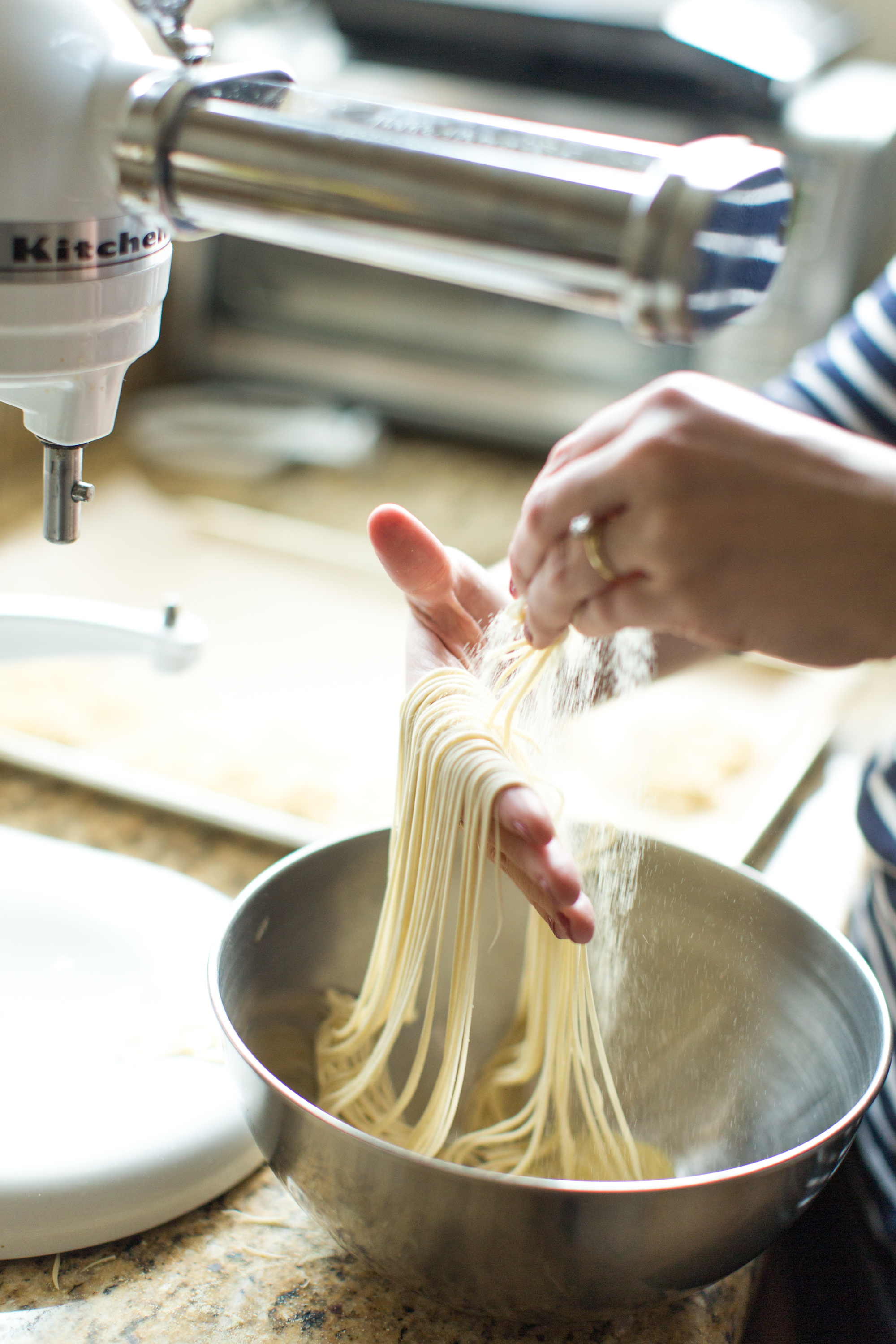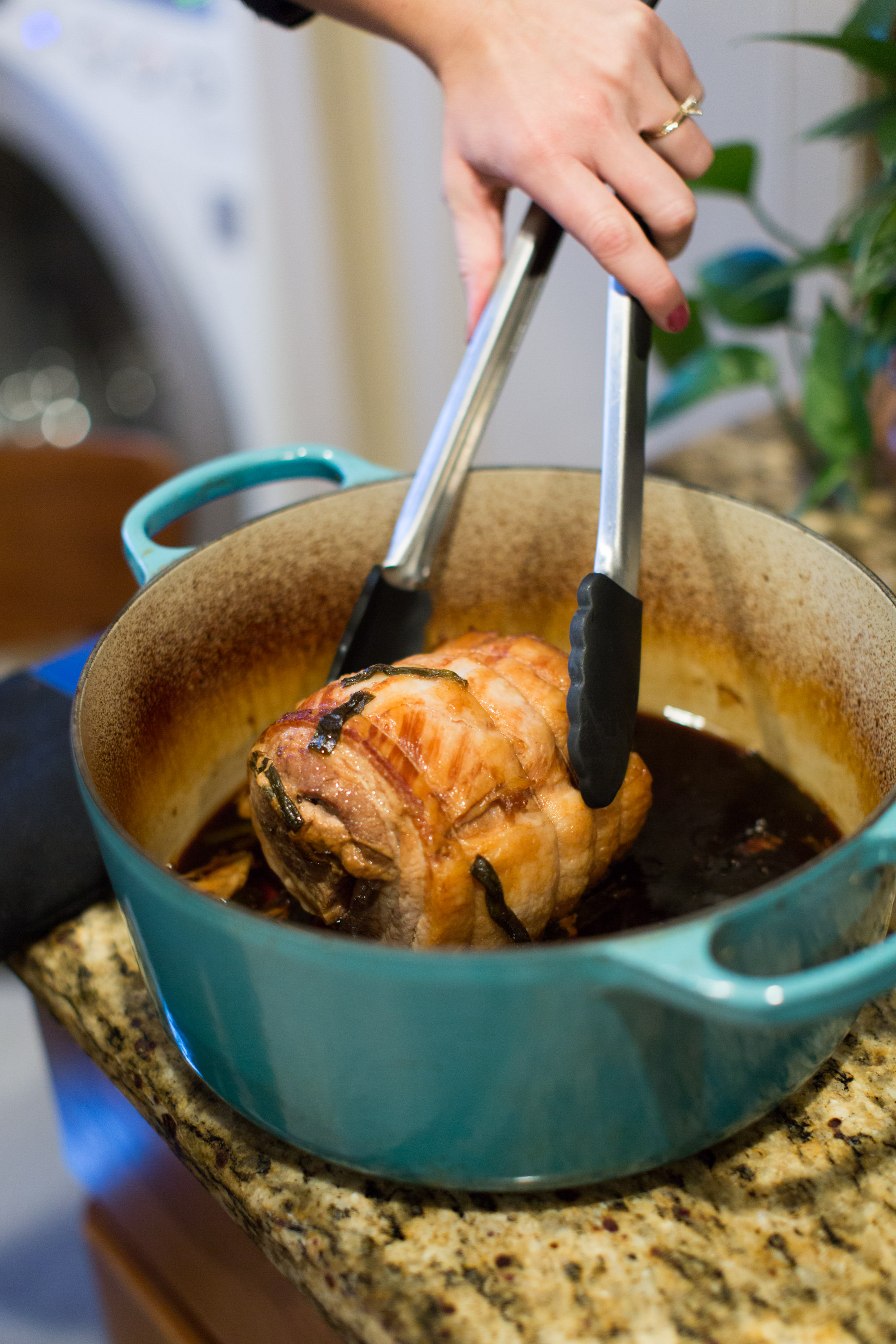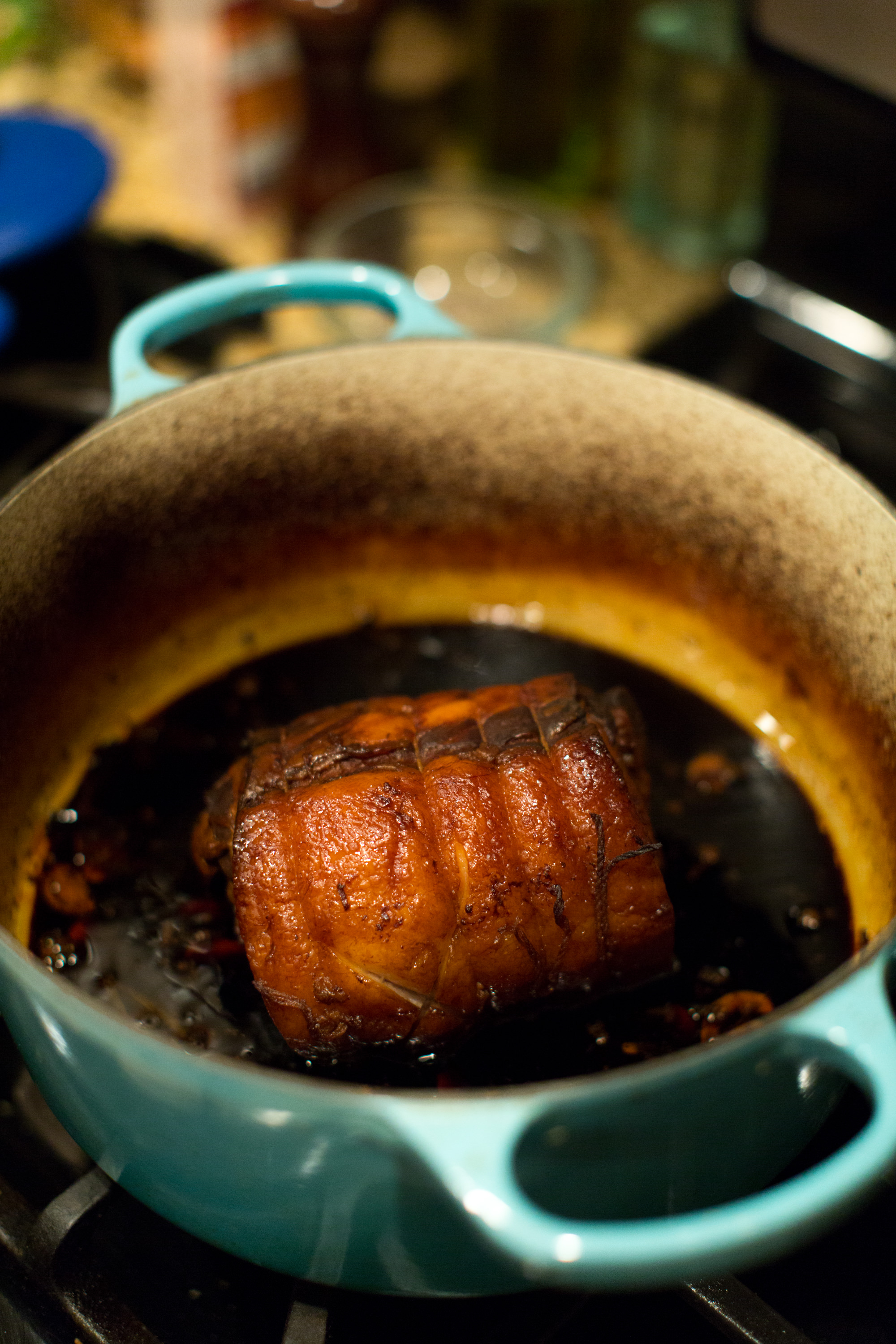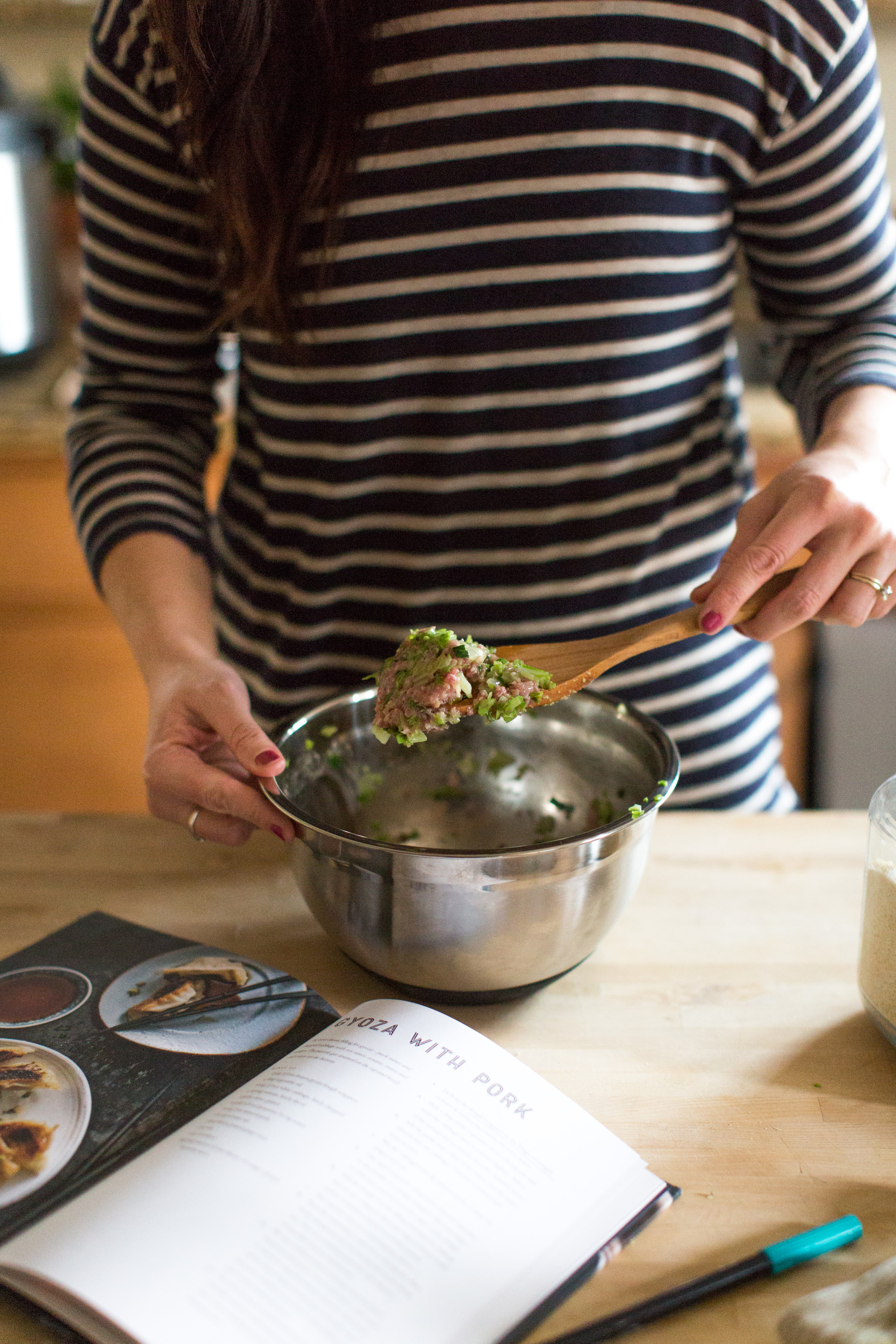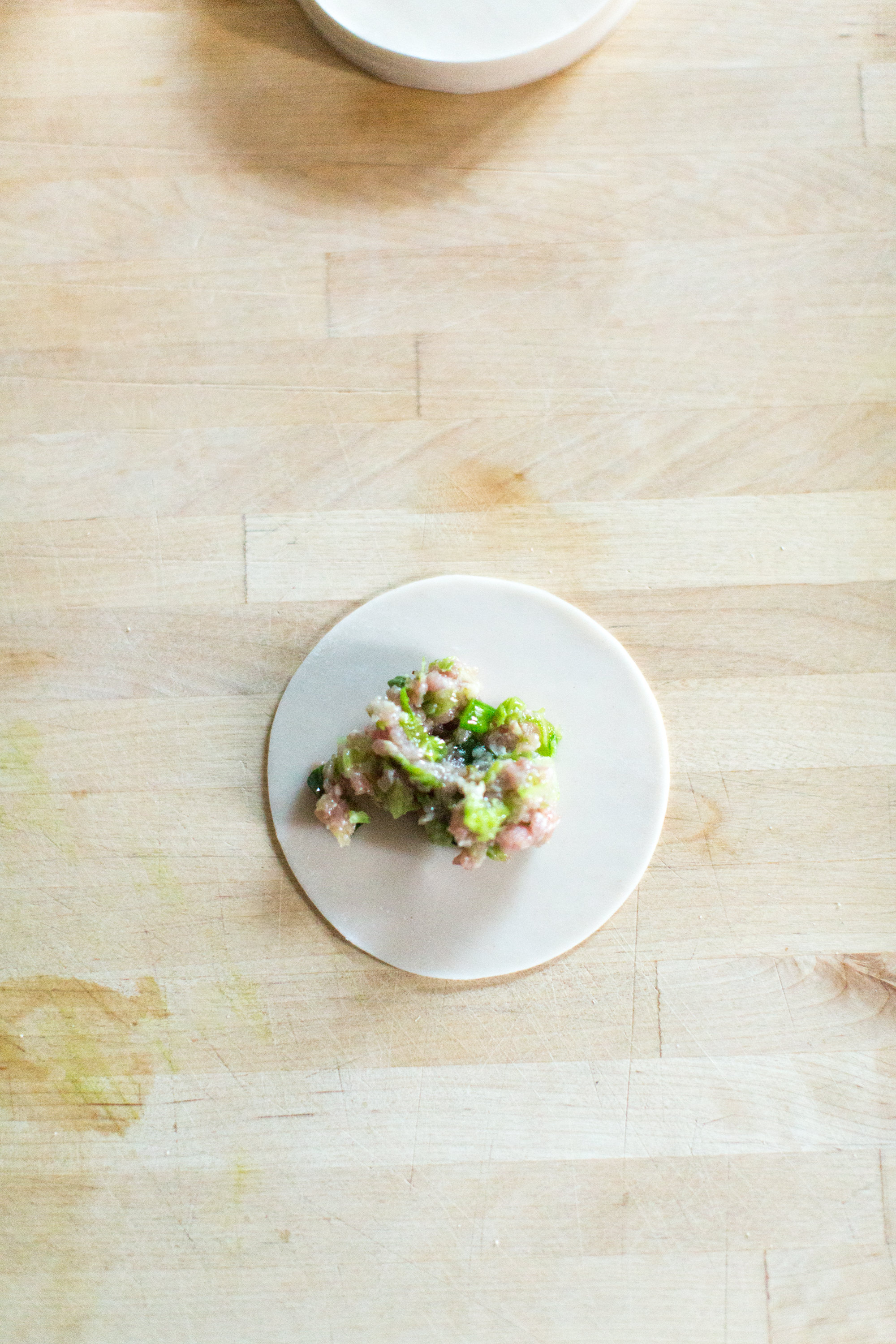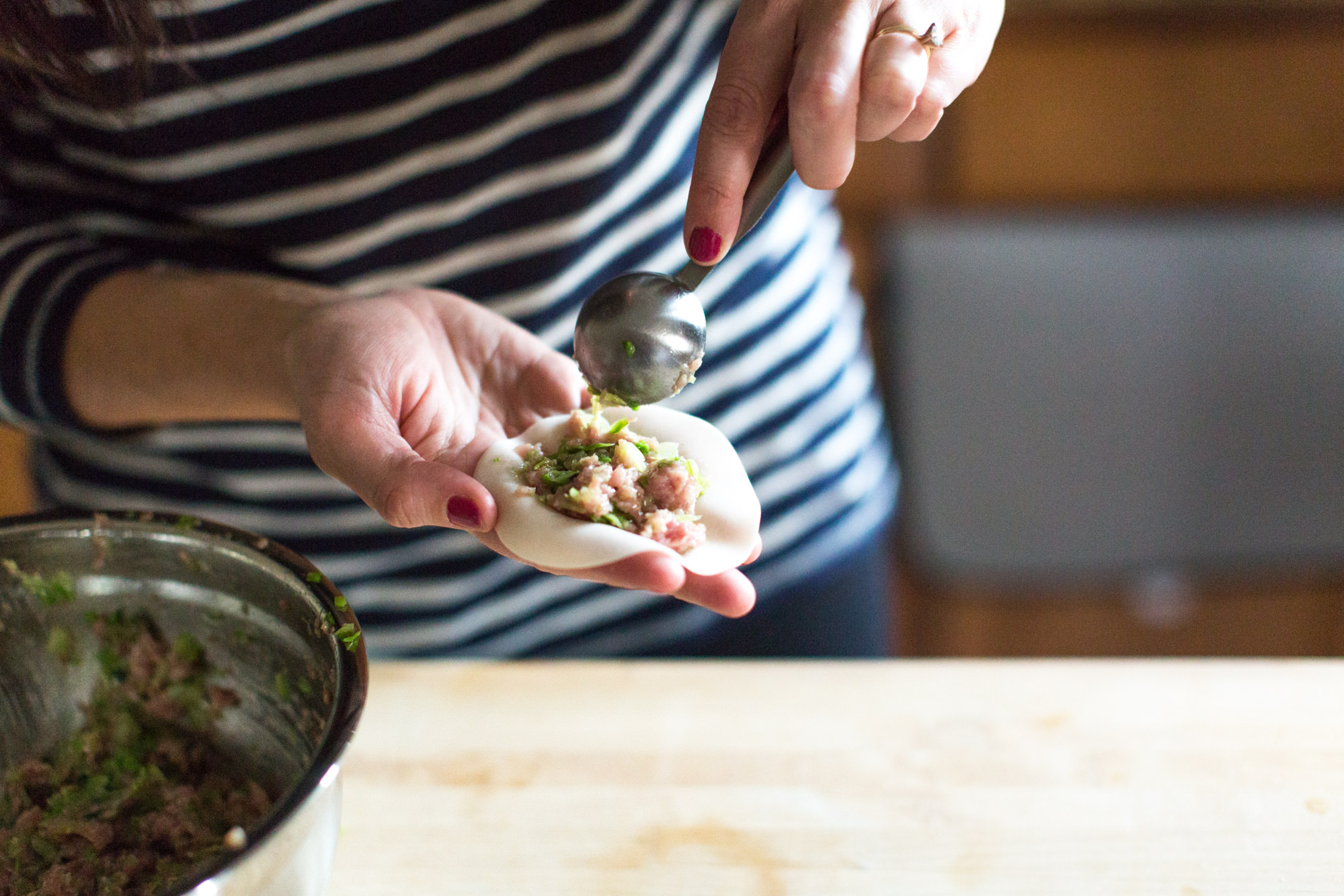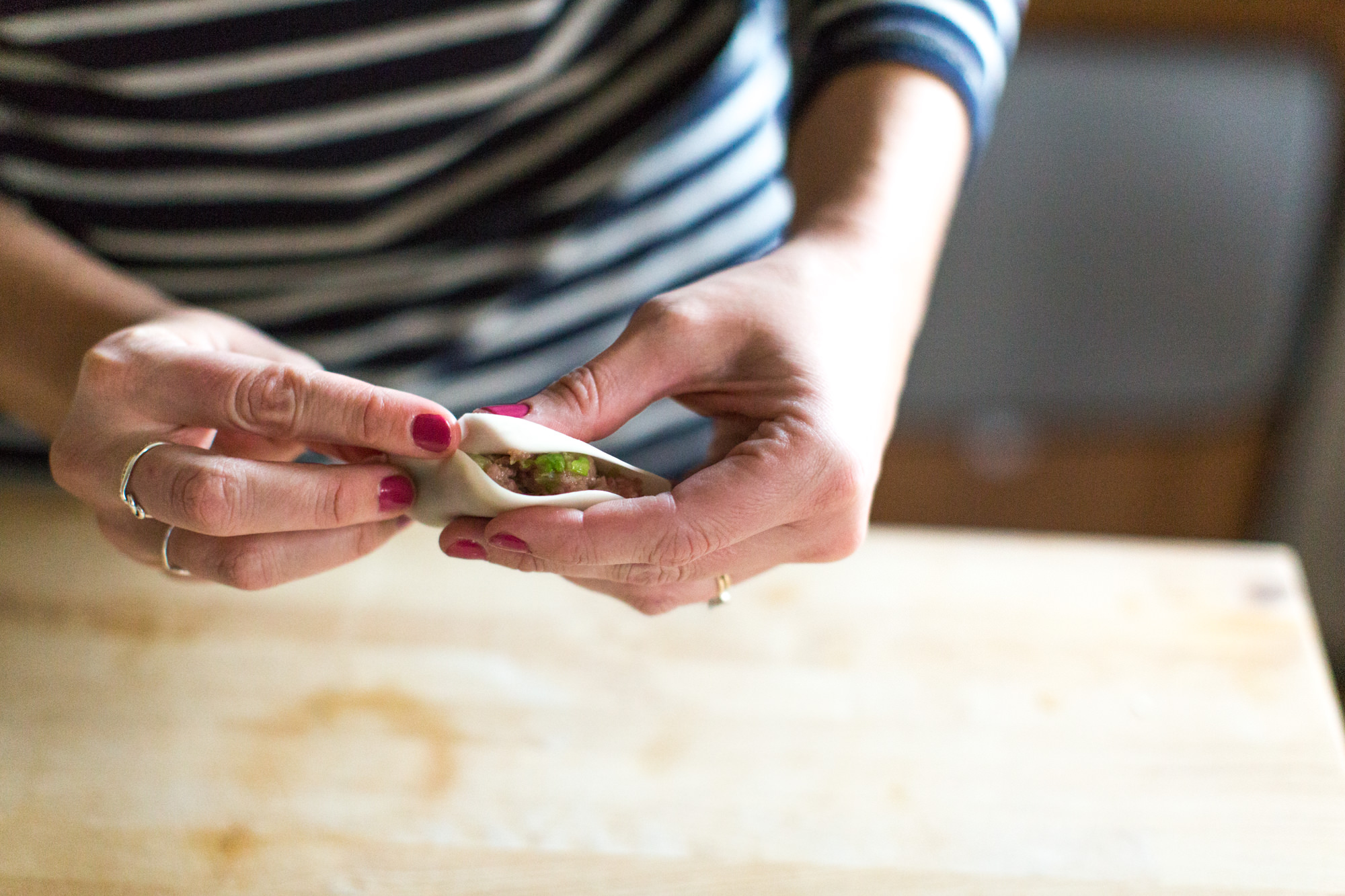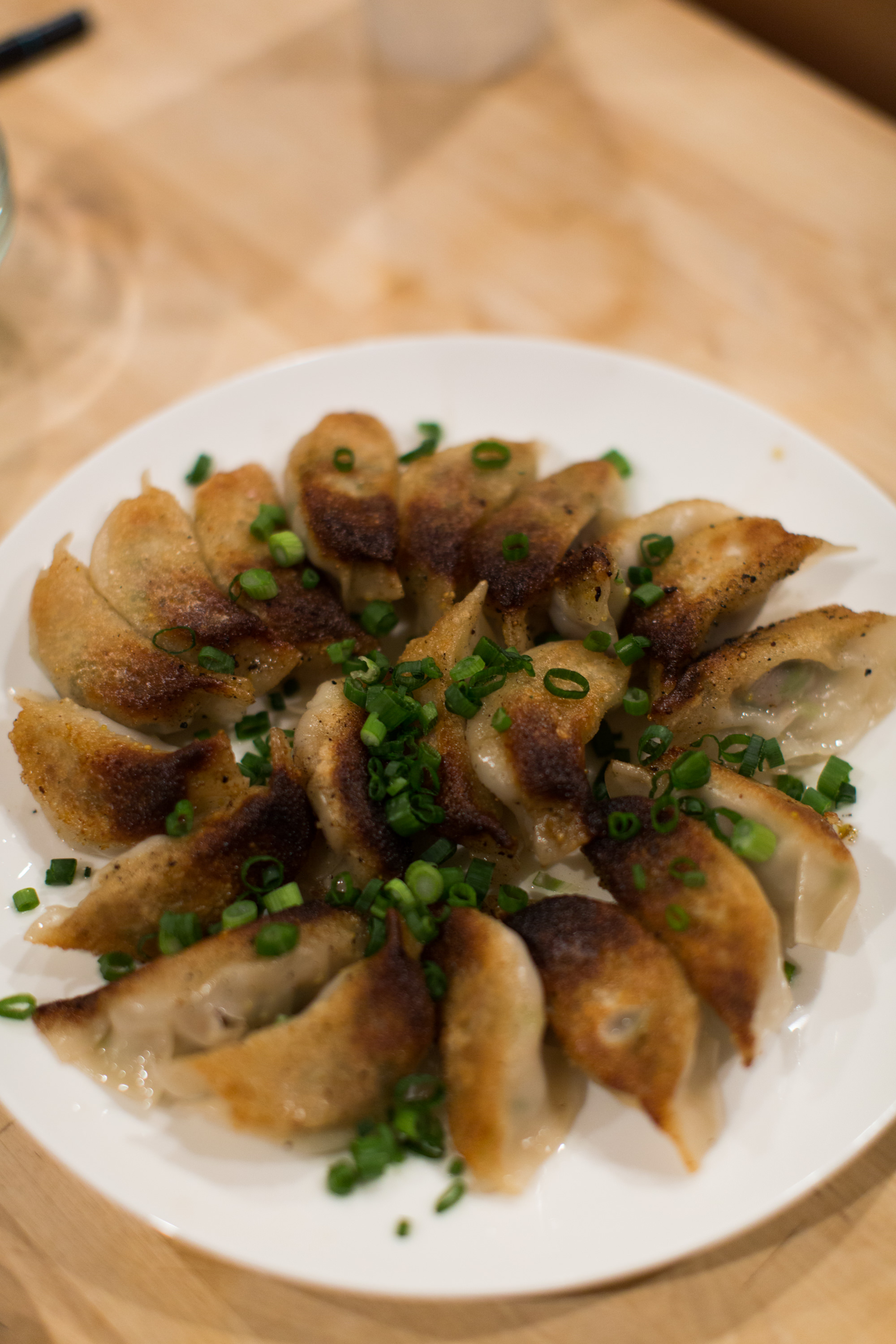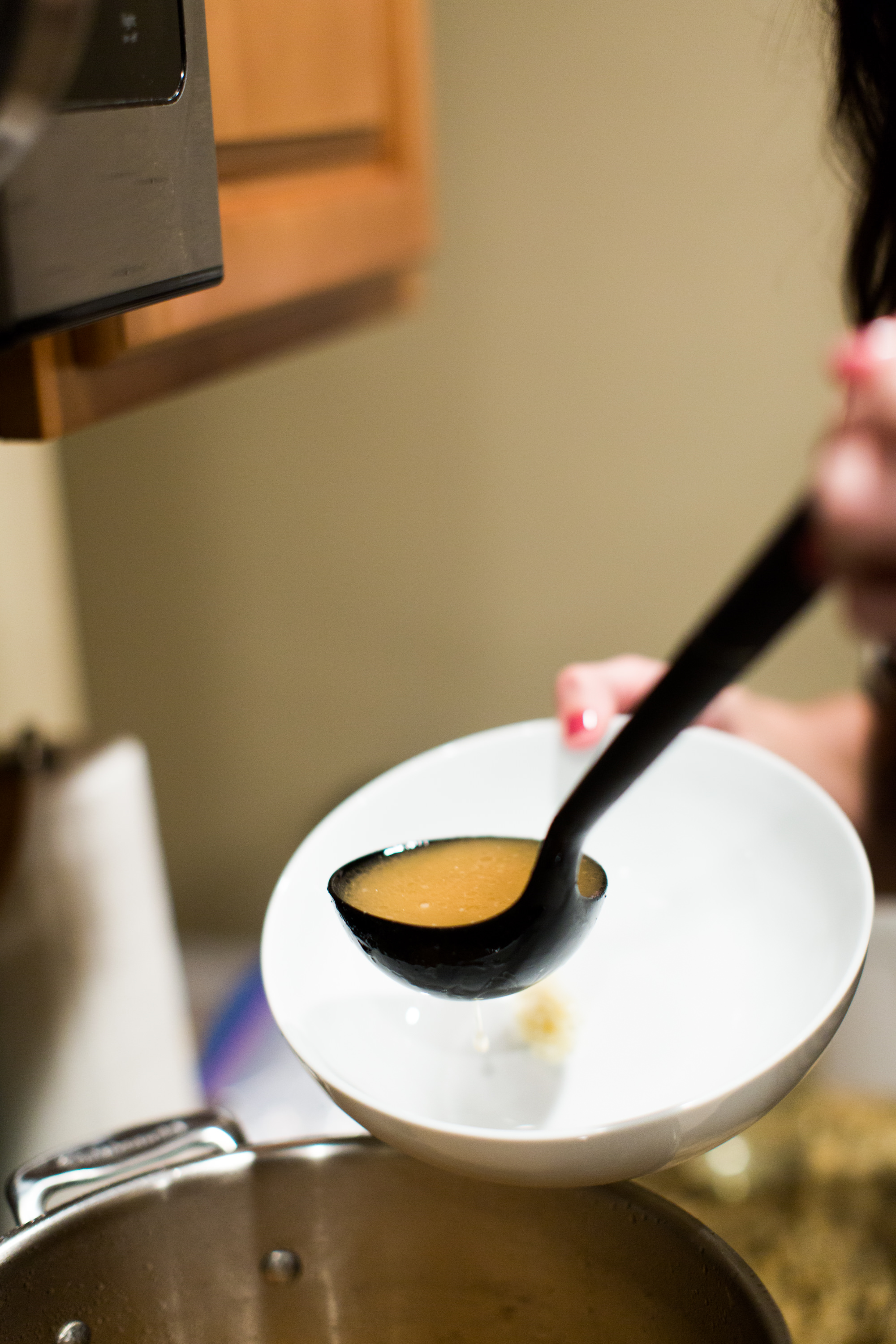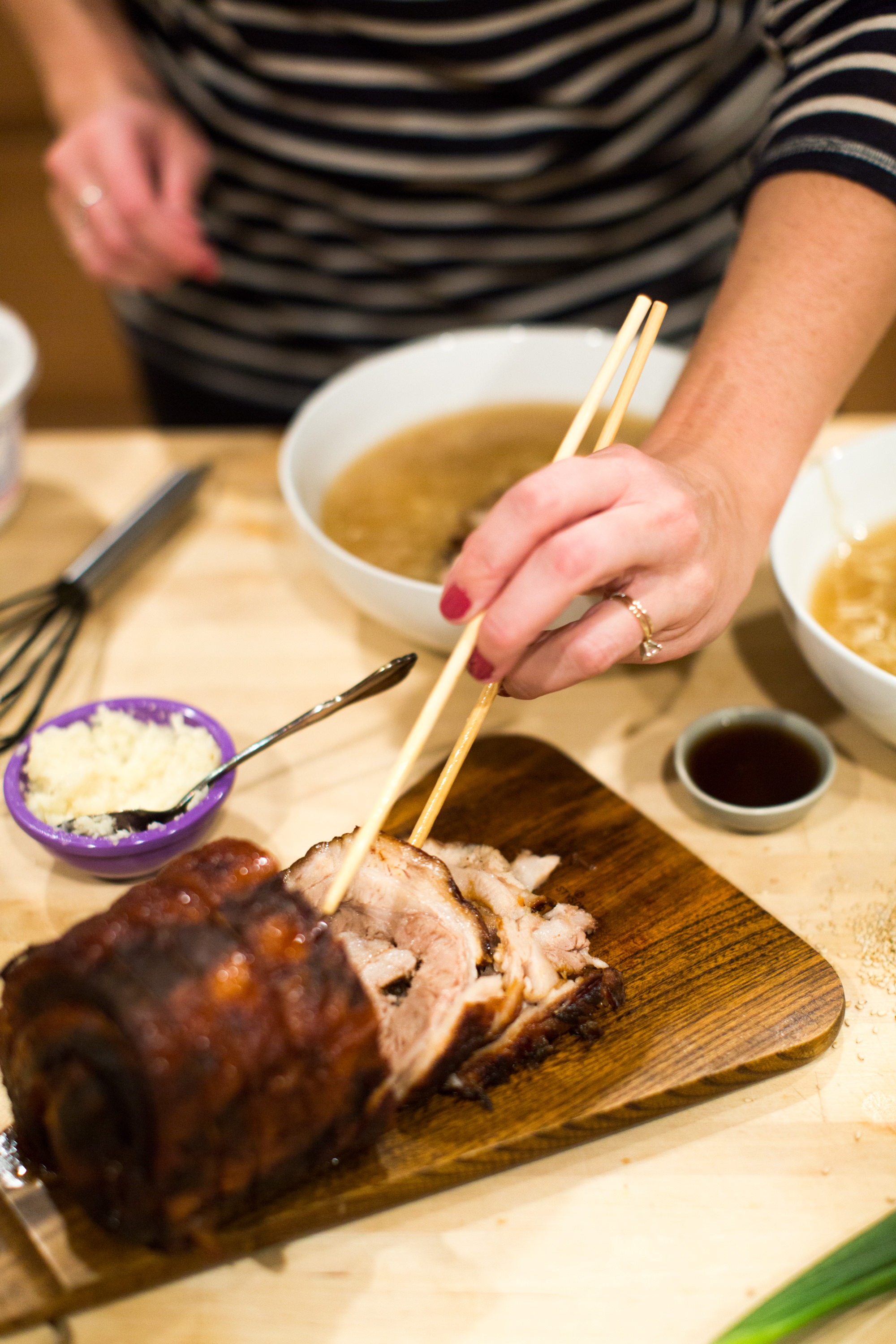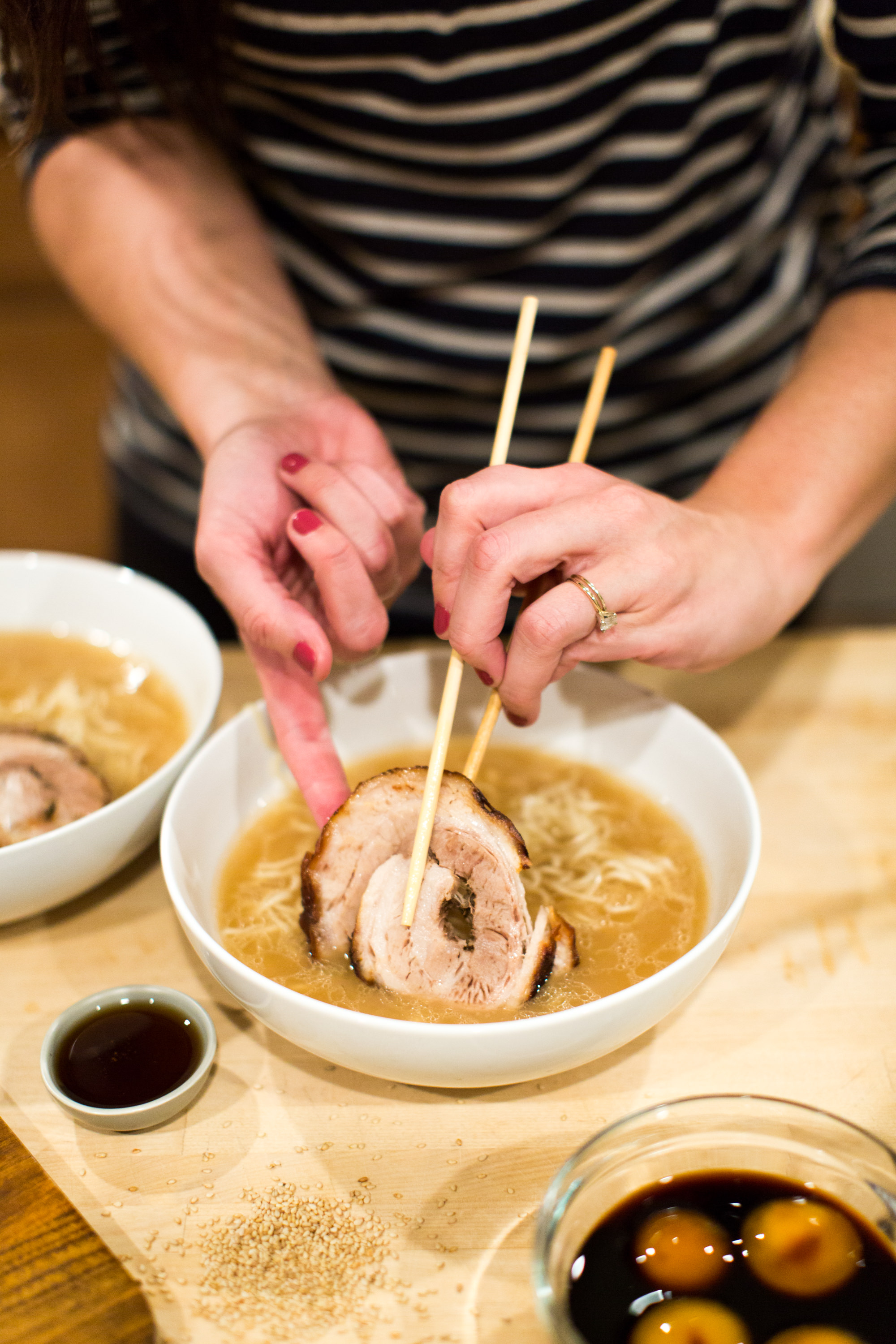Everybody Loves Ramen
Everyone knows I love to cook. This love goes so deep that some days the only thing I want to do the entire day is cook, which is how my friend KJ and I recently spent our Saturday. We went to my favorite local butcher and asian market to get our goods, we cured egg yolk, roasted baking powder for homemade ramen noodles, simmered broth for 24 hours, blended garlic and spices, stuffed dumplings, and at the end of the night were as content as could be with giant noodle bellies.
The recipe book we used boasts a myriad of amazing broth recipes, some of which can come together after just an hour of simmering. Being the overachievers we are, this is not what we chose to do—the thing about ramen is it can be as easy or as complex *ahem* as you make it.
Want to use prepackaged noodles? Go for it. Have a broth recipe that comes together in an hour? Great! Got a package of top ramen in the cabinet to fulfill that craving? I'm all about it. Want to make homemade tonkotsu? Well then buckle your seatbelt, folks, cuz you're in for the long haul.
Our Menu
(click to jump ahead to menu item)
Tonkotsu broth | Homemade Ramen Noodles | chasu pork | gyoza (dumplings) | homemade Tare
Want to recreate this menu exactly? Order this book and check out my grocery list & timeline
Tonkotsu aka Pork Marrow Ramen
When it comes to ramen, Tonkotsu is queen. Rich, fatty and full of comforting flavor, it should be light in color but completely opaque due to the conversion of fat to gelatin. There are a myriad of recipes online, but the consensus is: if you don't have at least 12 hours on your hands, then don't bother. (I told you this wasn't an easy week night recipe). Still, I wanted to see if there was a way to cheat the system and do a batch in the instant pot for way less time. Read up on that here.
Though there are many ways to serve this up, the broth is served with noodles (duh), black garlic oil, sesame seeds, chasu pork, and soft boiled egg. We decided to make all of this from scratch. Read on to find out out what aspects of ramen are worth it to make from scratch, and what you can just pick up from the store.
The Broth
Our recipe called for bringing onion and pork trotters (aka pig feet) to a slow boil for at least 12 hours, adding in more water to the mix as needed. First, soak the pork for up to 12 hours which yields a lighter colored broth. Then broil the pork, which brings out a rich flavor and just get to simmering with onions. The longer it boils, the more chance all the pork has to break down, creating a cloudy broth with more flavor suspended within.
So is it worth it?
My overall answer is Yes! Broth can be stored for months in the freezer so if you ever have a craving, the hardest part is already done for you! My one caveat being that I do think this could be started early in the morning and have a boil time of about 12 hours instead of 24 and yield a similar result.
Recipe
Ingredients
6 pig feet, cut lengthwise
6 liters of Water
2 white onions, halved
Instructions
Soak Pig feet in large bowl of water in fridge overnight or up to 12 hours.
Line baking sheet with tin foil and set oven to broil. Set trotters cut side down on baking sheet and broil for 15-20 minutes, until the skin is brown and getting crisp.
Add pork, water and onions in a large stock pot, bring to a low boil and boil gently for 12-24 hours, adding more water as needed.
Strain broth & serve immediately or store in freezer for when that ramen craving kicks in.
After 6 hours, the broth is starting to thicken up but is still rather clear. After 18 hours, it has become cloudy and light in color.
Tonkotsu after 24 hours
It's thick, cloudy, and completely gelatinous at room temp.
Ramen Noodles
Ramen noodles get their characteristic yellow color & springy texture from kansui, an alkaline solution that reacts with the gluten in the flour, making a chewier and sturdier noodle that won't break down while sitting in hot ramen broth. Thankfully, if you can't find this at your local grocery story, just toast baking powder in the oven at 250 degrees for an hour. Voila! You've got a great substitute.
We mixed the dough in the Kitchenaid until it came together, then made our arms sore kneading it until it was smooth and elastic (about 15 minutes). We took it through your typical process of noodle making with our Kitchenaid attachment, rolling out to a desired thickness, then cutting into spaghetti and coating in corn flour.
So is it worth it?
Overall, no. Was it a super fun kitchen experiment? Yes. Were they delicious? Absolutely. Do I want to make noodles every time I want to make ramen?

Noooooooope. As far as remade ramen, I hear that this is the best your money can buy (hello price tag). But this girl ain't picky and perusing my asian market for something that catches my eye will do just fine.
Chasu Pork
If tonkotsu broth is queen, then chasu pork is her crown. It's the most delicious way to make pork belly I've ever experienced. And though it takes a long time to make, it couldn't be easier for the impressive dish you get out of it.
Simply roll the pork together & tie into a tight package and braise in the oven for a few hours in a soy sauce + ginger + garlic marinade.
TIP: Skim off the fat and save the left over sauce to to use as stir fry sauce with rice noodles & veggies.
So is it worth it?
Yes. Yes. A thousand times yes. In fact I think it's a shame that I've only ever made this for ramen. It's so friggin delicious I can't even describe it. And though it takes a while to make, its only about 20 minutes of prep and then you practically just leave it in the oven to cook.
Gyoza (Dumplings)
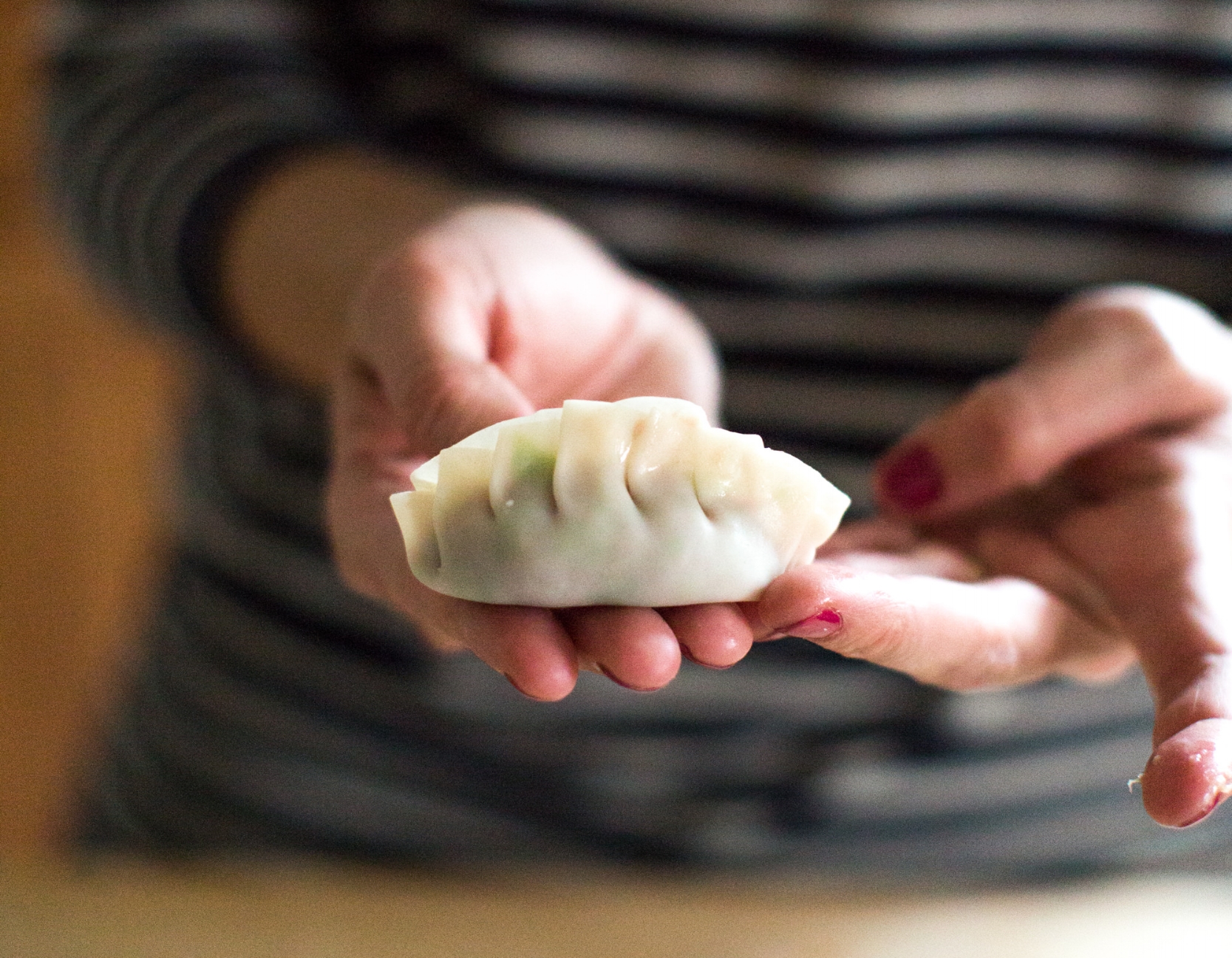
The delicate motor skills that seem to be required to make dumplings has always deterred me from making them at home. But with a little practice and the help of youtube videos, you too can be a dumpling master. The filling is SO easy to make and with the pre-made papers available, after you get the hang of it, it's a cinch! Just find a youtube video or two, and get rollin!
So Is it worth it?
Yes & No. If you're wanting to try something new and fairly easy with a high pay off, it's definitely worth it. But if you have a lot on the menu already and are a little overwhelmed then I would skip it or get some pre-made dumplings and save this recipe to accompany a simpler dish on another day.
Tare, Assembly & Toppings
Ramen broth typically has no seasoning (salty stuff) added during the broth making process. For example our tonkotsu broth is just simmered pork and onion—no salt or soy sauce added. Seasoning is added through what is known as "tare" which is whisked into the broth after you've served it in the bowl to enhance the flavor of the soup. It can be soy sauce, miso, salt or other fun combinations of salty-umami things. Our tare was blended garlic and a touch of soy sauce. Our toppings consisted of soy sauce egg yolk, green onion, chasu pork, sesame seeds, and black garlic oil.
After whisking together your broth & tare, add in your perfectly cooked noodles & toppings & dig in.
So What Tare & Toppings are worth making?
As far as tare goes, I would say adding in soy sauce or miso (depending on your type of broth) is completely fine. No reason to go crazy on making your own tare unless you reeeaaaaalllly want to. As far as toppings go, in addition to making your own chasu pork, the soy sauce egg yolk was by far the most worth it! It's the consistency of a soft boiled egg yolk, but has been cured in soy sauce & lends another element of salt to the dish.
Soy Sauce Egg Yolk Recipe
Ingredients
4 Egg Yolks
1/4c soy sauce
1/4c mirin
1T grated fresh ginger
Instructions
Mix Soy Sauce, miring and ginger into a small tupperware container or bowl.
Gently lower yolks into liquid, give a swirl to coat the yolks, cover and refrigerate for 6 hours.
To serve, remove yolks with spoon and place in hot ramen broth.
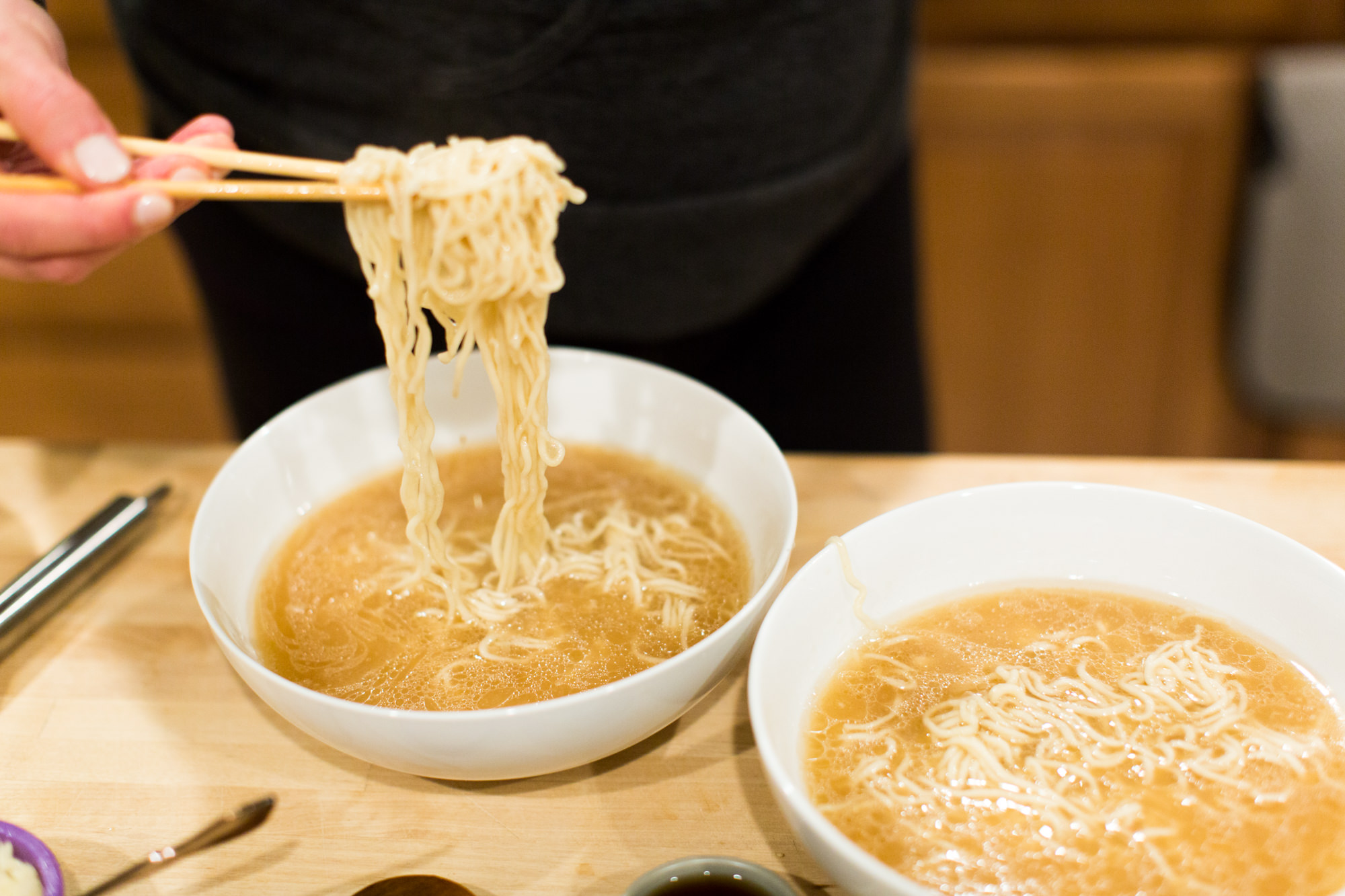
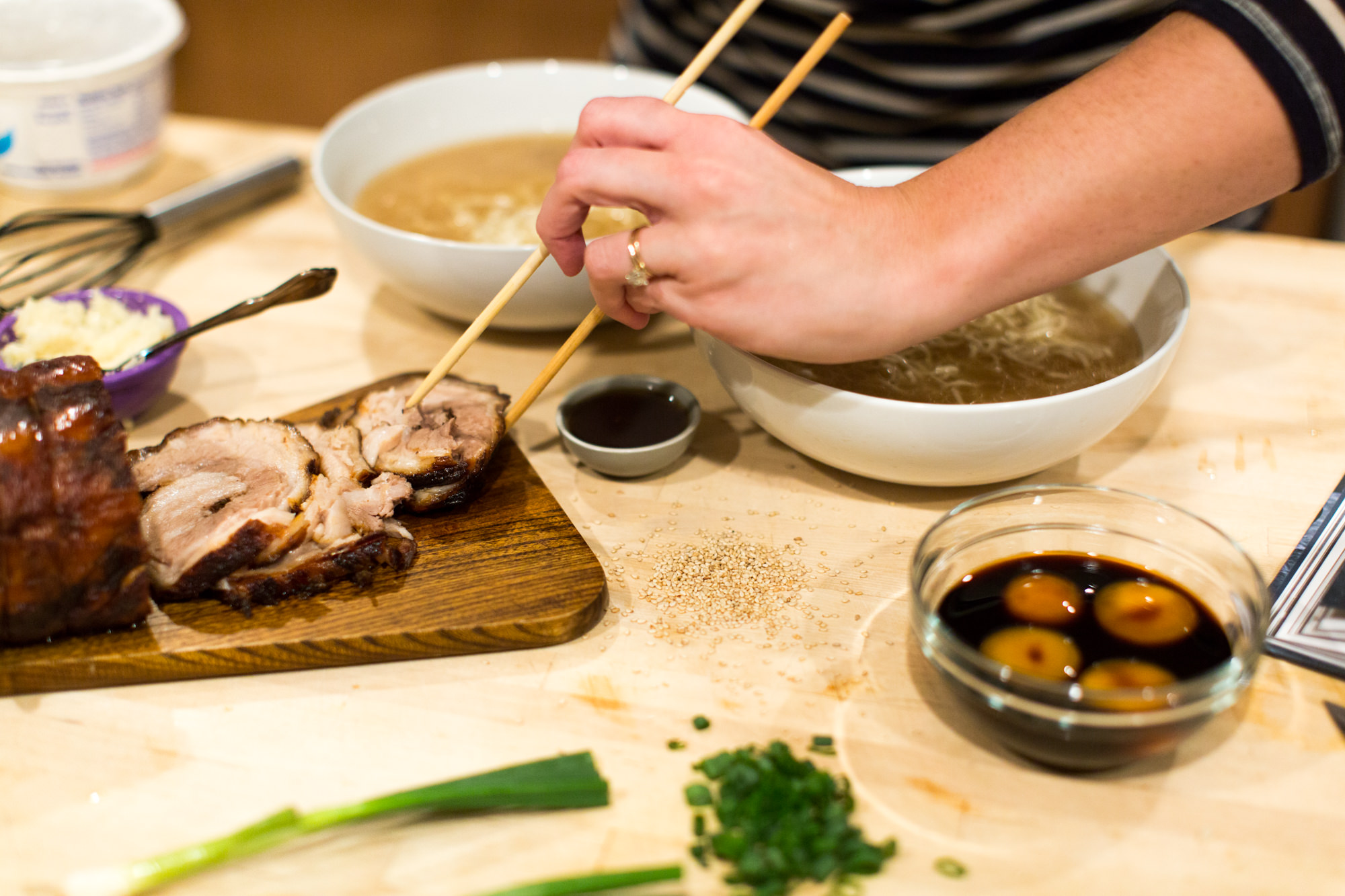
Conclusion
Though it was a ton of time on our feet, this day was SO MUCH FUN and I would do it again with another ramen recipe. We learned a whole heck of a lot, and now we have delicious broth and chasu for days. I highly recommend taking a look at my menu & gameplan and tailoring your menu from there!
Looking For An Easier Alternative?
Want to make ramen but looking for easier recipes? Try this Spicy Ramen from pinch of yum or this Miso Ramen from Dishing Up The Dirt. They're super easy and don't take as much time, and you can add any of the above recipes like gyoza, soy sauce egg, or homemade noodles to the mix for a bigger investment.



